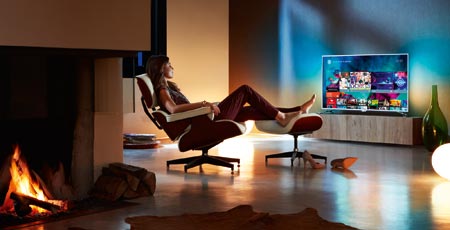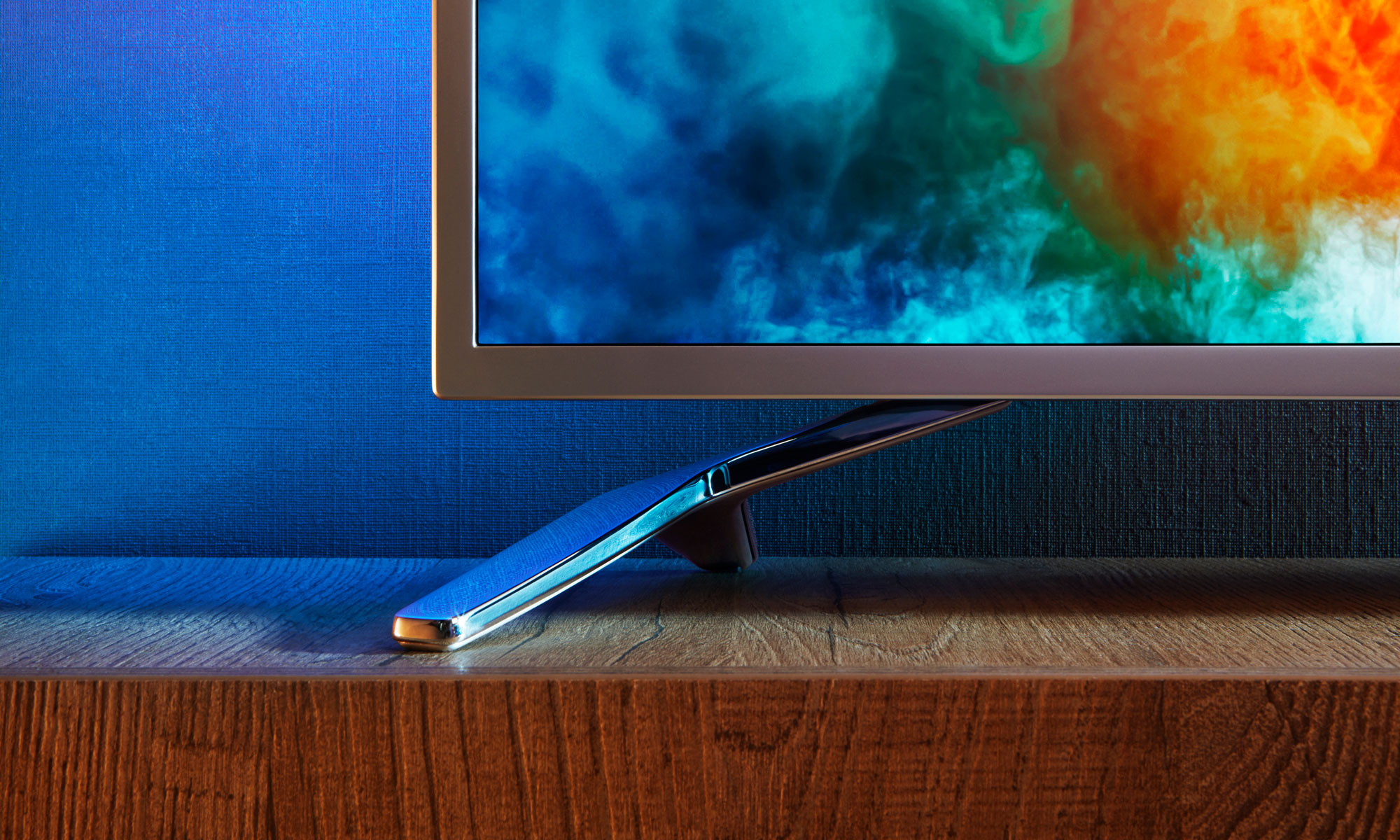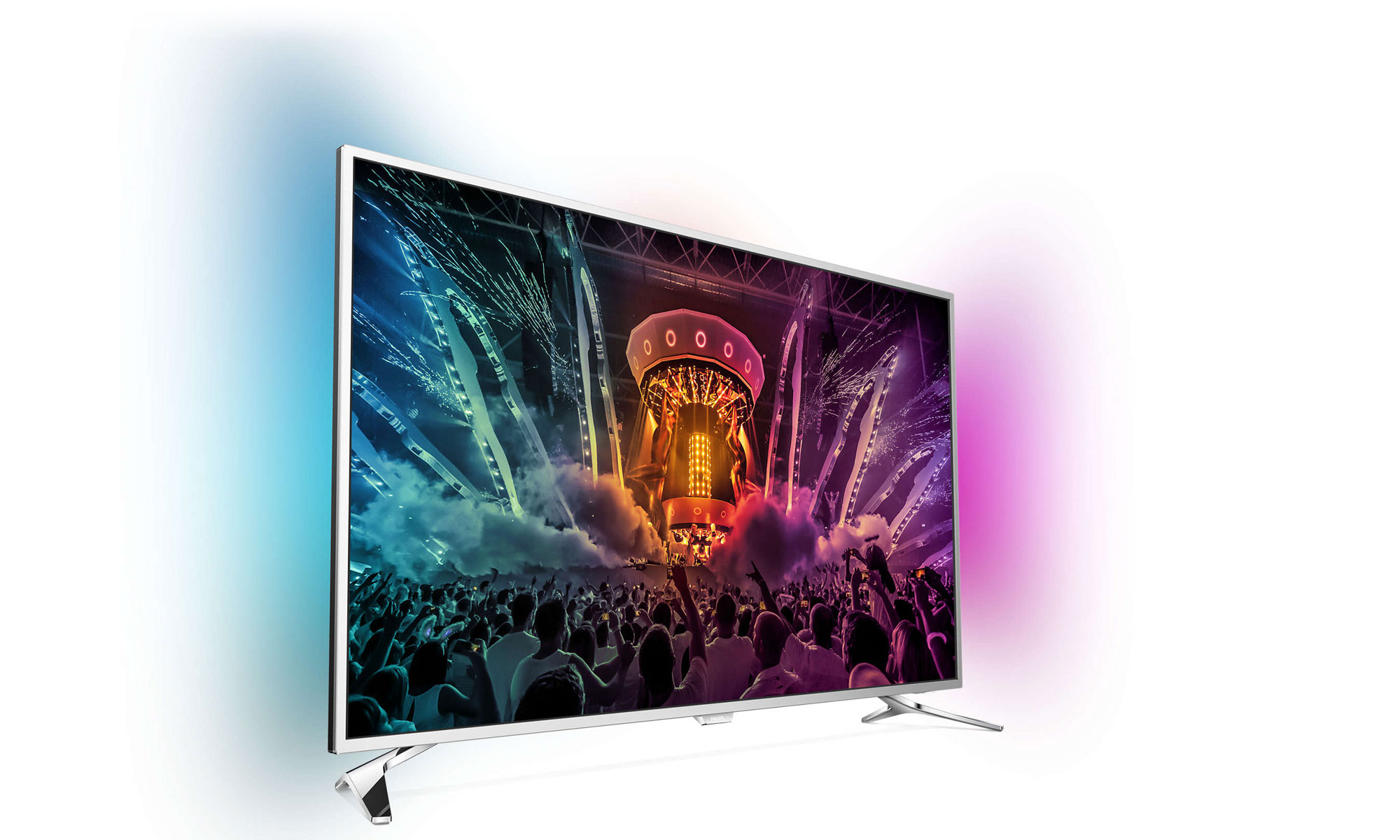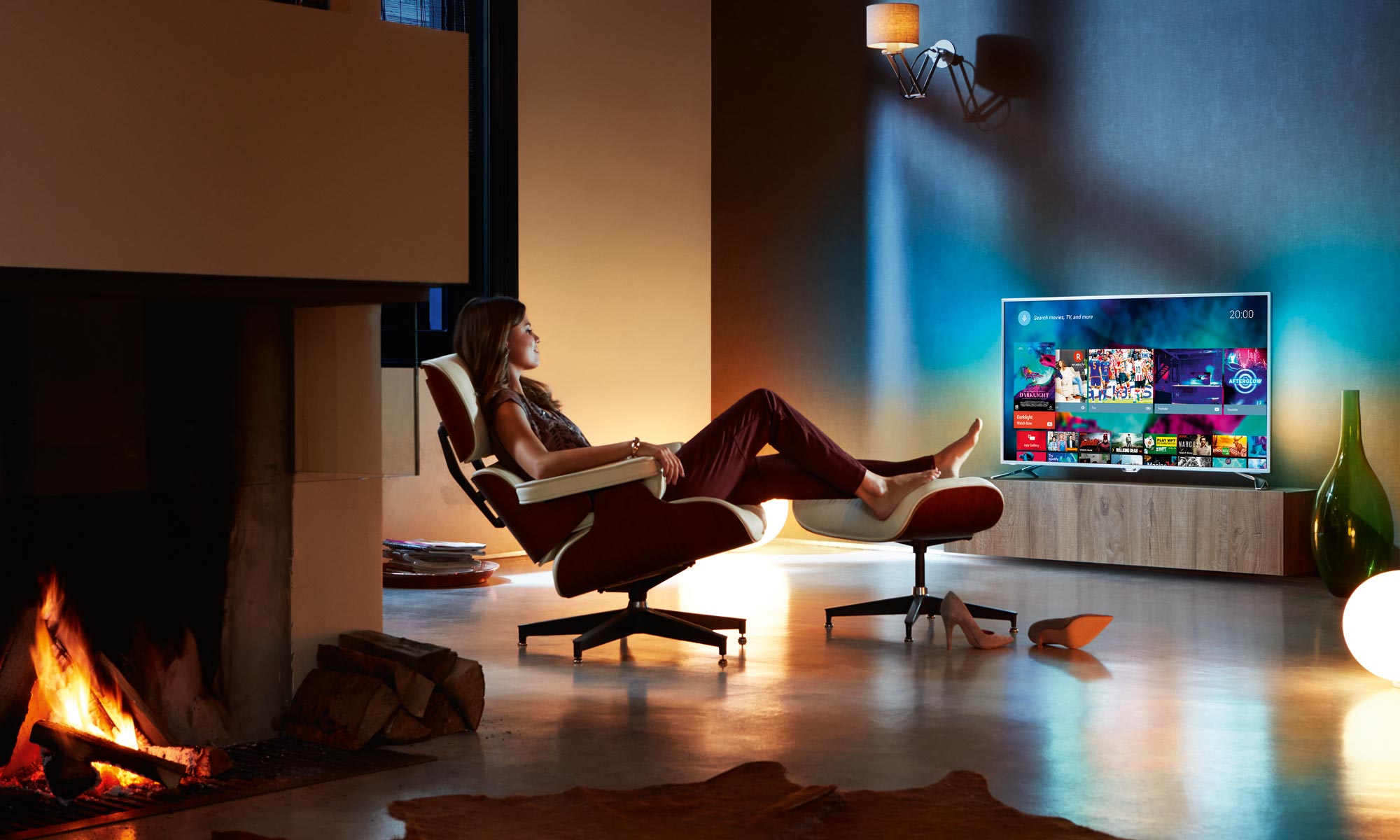Review: Philips 6501
Philips 6501 is a mid-range 2016 model with 4K, Android TV and Ambilight. Like its bigger brother 7101, 6501 is based on an IPS type LCD panel. However, it lacks the wide color gamut that 7101 offers (although implemented in a wrong way). Philips still claims that 6501 supports HDR (high dynamic range).
Being a 6 series model 6501 is squarely positioned in mid-range territory competing with the likes of Samsung’s 6 series TVs. Mid-ranges TVs are rarely innovative but the interesting question is how much value you actually get for you money in 2016?
Philips 6501 is available only in Europe. It will also be sold as 6551 with a center-oriented base and 6581 with 3-sided Ambilight.Price and retailers:
Specifications
55" Ultra HD (3840x2160)
HDR processing (no HDR hardware)IPS LCD
Direct LED2-sided Ambilight Stand (fixed)
Wall (VESA)(HxWxD) 77.3 x 123.9 x 23.5 cm (with stand) 17.4 kg HDMI (2x 2.0 + 2x 1.4)
USB (2x)
Ethernet
1x CI+Optical
HDMI-ARC (4x)
Headphones2.0 stereo (20W) DVB T/T2/C/S2
WiFi (n standard)MPEG4
HEVC
VP9Android TV
16GB (expandable)Philips Remote (double sided)
Philips TV Remote appManual
Remote controlSubscribe to our Newsletter, Facebook, twitter or RSS to receive notice when new reviews are publishedFirst impressions
Turned off 6501 looks like almost any other TV today. The thin bezels and hidden speakers make it look discreet and anonymous. The only clue as to who made the TV is the tiny Philips logo on the lower frame.
The bezels are made from plastic and it is not nearly as elegant and sleek as 7101 that we recently reviewed. Another difference between the two is that 6501 is significantly thicker, which can be attributed to the fact that 6501 has direct LED backlight whereas 7101 uses edge LED.
When turned on it is a different story. Philips’ signature feature Ambilight is instantly recognizable. 6501 has 2-sided Ambilight, which means that there are no light effects on top and bottom. If you want to extend light effects to the living room you can do so by pairing the TV with the Philips Hue lighting system. Philips will also sell the 6581 variant with 3-sided Ambilight.
The feet are also made from plastic, although the press photos try to portray them as metal. One thing that you need to be aware of is that the base construction on Philips’ new TVs is very wide, which in turn means that you need wide TV furniture. In fact, we had to extend our test bench to accommodate the 55" model, and we usually have no issues with much larger 65" TVs from other brands.
Input ports generally face down or to the side. Only the legacy analog ports face out towards the wall. As said before, avoid using analog ports. They have no place in the 4K ecosystem and should have been killed years ago.User experience & features
As already discussed in our review of 7101, Philips will continue to use Android TV in all of its 2016 TVs. The TVs come pre-installed with version 5.1 and will get Android TV version 6.0 with a software update later this year. So we obviously cannot yet comment on the performance of 6.0.
We confirmed that Philips 6501 and 7101 both use the MediaTEK MT5890 chipset, meaning that 6501 is completely identical to 7101 when it comes to Android TV look and feel. It uses the same quad-core processor and offers the same 16GB storage space. You can expand storage by connected a USB hard drive. Even the remote control is identical.
There is no point in going over all of the features yet again so jump to our Philips 7101 review to learn more.
The TV supports Netflix in 4K but not yet HDR.Calibration
We were not impressed by Philips 7101 that we recently reviewed. The TV forced everything into wide color gamut, even when it should not. 6501 has a panel with a native standard color gamut (Rec.709) so it is a simpler, more straight-forward TV in terms of calibration.
Like its bigger brother 7101, 6501 offers two ISF profiles that have been calibrated from the factory and this time the ISF modes are in fact fairly accurate. As opposed to 7101, which had native wide color gamut, 6501 has a slightly too small color gamut, but it is within the margin of error of Rec.709 so it is no big concern. Colors are generally quite accurate in ISF mode so we used ISF Night as the basis for our calibration. You can see our results below and our calibrated settings in the next section.
An acceptable but not great calibration result on a TV that offers very limited settings options in its menus.Measurements
In our "measurements" section we include all measurements and our suggested calibration settings. If you want to learn more about our test methodology click here.Note: The light sensor automatically adjusts the intensity of the backlight depending on your viewing environment. If you watch TV during daytime and in the evening it can be useful to activate. If you activate the ClearLCD setting you should also increase the "Contrast" setting that controls backlight
Brightness & black Out-of-box Calibrated Black level 0.18 cd/m2 0.11 cd/m2 Brightness 248 cd/m2 125 cd/m2 Contrast 1378:1 1137:1 HDR 376 cd/m2 peak - Input lag 46 ms 35 ms (Game Mode)
Power consumption Out-of-box Calibrated On 114 W 91 W HDR 149 W - Standby 0.3 W -
Time measurements Time Start-up (until responsive) 5 s Start-up (until picture comes up) 4 s Netflix app start-up time 13 s Youtube app start-up time 4 s
Video file Specs Status Dubai 4K 4K (3840x2160 pixels) – 23.976fps – 10 bit colors - BT.709 color space – 4:2:0 subsampling – 51.4 Mbps bitrate – HEVC - .ts file Fails Costa Rica HD HD (2560x1440 pixels) – BT.709 color space – 4:2:0 subsampling – 6.54 Mbps bitrate – VP9 - .mkv file Fails Costa Rica 4K 4K (3840x2160 pixels) – BT.709 color space – 4:2:0 subsampling – 12.71 Mbps bitrate – VP9 - .mkv file Fails Terrifying Pyroclast 4K 4K (3840x2160 pixels) – BT.709 color space – 4:2:0 subsampling – variable bitrate – VP9 - .mkv file Fails Big Buck Bunny HD (.ts version) HD (1920x1080 pixels) – 8 bit colors - YUV color space – 4:2:0 subsampling – 2.5 Mbps bitrate – 60fps - HEVC - .ts file Fails Big Buck Bunny HD HD (1920x1080 pixels) – 8 bit colors - YUV color space – 4:2:0 subsampling – 60fps - 2.2 Mbps bitrate – HEVC - .mkv file Works Jellyfish HD HD (192x1080 pixels) – 8 bit colors – BT.709 color space – 4:2:0 subsampling – 98.3 Mbps bitrate – AVC - .mkv file Fails LG Arctique 4K 4K (3840x2160 pixels) – 8 bit colors – YUV color space – 4:2:0 subsampling – 50.0 Mbps bitrate – 29.970fps - AVC - .mp4 file Works Eutelsat 4K demo 4K (3840x2160 pixels) – 10 bit colors – YUV color space – 4:2:0 subsampling – 23.1 Mbps bitrate – 50fps - HEVC - .ts file Fails HDR Camp HDR (high dynamic range) - 4K (3840x2160 pixels) – 10 bit colors – BT.2020 color space – 4:2:0 subsampling – 75.6 Mbps bitrate – 59.940fps – HEVC ([email protected]) - .mp4 file Fails HDR Smurfs 2 clip HDR (high dynamic range) - 4K (3840x2160 pixels) – 10 bit colors – BT.2020 color space – 4:2:0 subsampling – 56.4 Mbps bitrate – 23.976fps – HEVC (Main10@L5) - .mp4 file Fails HDR Chappie clip HDR (high dynamic range) - 4K (3840x2160 pixels) – 10 bit colors – BT.2020 color space – 4:2:0 subsampling – 60.3 Mbps bitrate – 23.976fps – HEVC (Main10@L5) - .mp4 file Fails Ghost Towns 8K 8K (7680x4320 pixels) – variable frame rate – 8 bit colors - YUV color space – 4:2:0 subsampling – 20.7 Mbps bitrate – AVC - .mp4 file Fails
Group Setting Value Picture Profile ISF Night Contrast 32 Colour 50 Advanced - colour Colour Enhancement Off Color temp Custom Advanced - contrast Contrast mode Off Dynamic Contrast Off Brightness 50 Video contrast 100 Light sensor On/Off Gamma 0 Advanced - sharpness Ultra Resolution Off Noise Reduction Off MPEG Reduction Off Advanced - motion Perfect Natural Motion Off Clear LCD On/Off Custom Color temp Red WP 127 Green WP 90 Blue WP 52 Red BL +2 Green BL -1 Blue BL -4 Picture quality
Philips 6501 has a semi-glossy panel that has a mirror effect and reflects light sources. When turned off it is quite reflective but it is important to keep in mind that the glossy panel also helps maintain contrast in brightly lit environments.
If you watch TV mostly in a brightly lit living room you will see reflections in the dark areas of the image but 6501 is not different than most other modern LCD TVs out there.
Before we received 6501 we were informed that it would use a VA LCD panel but we quickly established that it is in fact an IPS LCD panel, which means that 6501 and 7101 are more alike than we had anticipated.
After examining 6501 in depth we would even go as far as to call 6501 a scaled-down version of 7101, meaning that it has the same 4K resolution but no wide color gamut. As discussed in our 7101 review a wide color gamut is per definition good but the way it was implemented in 7101 was very problematic. In that light, it is good news that 6501 has a standard color gamut.
For the duration of the test we were able to compare the two TVs side-by-side and given the choice we would pick 6501. In ISF mode and after calibration it has remarkably more accurate colors, slightly better contrast and black levels, and very similar motion reproduction. It processes and upscales SD and HD content well and can process 4K natively from different sources, including streaming from Netflix.
We suspect that the reason for the slightly contract and black level (see the “measurements” section) is due to the fact that 6501 has backlit LED (7101 has edge LED). Backlit LED makes the TV thicker but it also helps improve light homogeneity and reduce risk of clouding/bleeding.
Philips claims that 6501 supports HDR (high dynamic range) but as discussed in our review of 7101 the TVs do not have the hardware to reproduce HDR. Sure 6501 will accept HDR material, and interpret it as such, but it cannot do much with it. This is even truer for 6501 than it was for 7101 since 6501 does not have wide color gamut that we have found to be the most visible picture improvement on mid-range "HDR" TVs. We have to once again remind our readers that HDR requires LCDs with full array local dimming or HDR-capable OLEDs.
While testing 6501 and 7101 we also noticed that none of the TVs accept HDR video files via USB yet. The TVs will accept the HDR-encoded file but does not process the HDR information, meaning that the image will look washed out and just plain strange. Netflix’s HDR streams are not yet supported either. UHD Blu-ray discs are accepted but not on all HDMI ports, as not all of them are HDMI 2.0. If you connect a UHD Blu-ray player to the wrong port you will be noticed that the movie has been downscaled to HD (without HDR).
Another thing that we observed when connected a UHD Blu-ray player is that 6501 fails to process 4K 24p. Moving pictures stutter very badly. There is definitely some frame rate conversion going on. We found no way to eliminate it but it can be somewhat improved by engaging the Perfect Natural Motion and ClearLCD settings. Philips has promised to fix the issue in a future firmware update.
As discussed before, LCDs activate a special HDR mode when fed HDR material. In this mode backlight gets maxed out, which in turn means that black levels look even worse, especially on IPS LCD.
To sum up, Philips’ claims of HDR support on 6501 are pretty farfetched. There is no visible improvement to be had from feeding the TV with HDR content, often quite the opposite. If you are planning to pair the TV with an UHD Blu-ray player, be aware that the only effect to be had is from 4K resolution.
6501 has another advantage over 7101. It is not as sleek and beautiful but that has to do with the fact that it uses direct LED instead of edge LED. This in turn means that backlight homogeneity is better, which also leads to slightly better black levels than 7101 (0.11 vs. 0.13 nits).
If you are willing to sacrifice aesthetics for performance 6501 presents a compelling argument.
Philips has completely abandoned 3D so none of the new TVs support the feature.
6501 also mimics 7101 in the area of motion performance. Unlike last year’s Philips TVs, it is a good companion for game consoles. We measured input lag to 36 ms in the game mode, which is on par with many other good TVs in this price class and good enough for even fast-paced racing or first-person shooter games. You can connect a PlayStation or Xbox without concerns. Even in the "Standard" mode 6501 had a decent input lag level of 46 ms, which many people can live with. It is a major improvement over last year.
Viewing angles are relatively wide; not perfect but good enough for most living rooms, even if you sit 40-50 degree off center. This is a common trait for IPS LCD panels so no big surprises here.Conclusion
Philips 6501 offers the exact same Android TV platform and features as its bigger brother in 7101. The main differences are that 6501 looks less elegant and that it has a simpler implementation of Ambilight (2-sided). It is also noticeably thicker than 7101 because the panel incorporates a direct LED system.
Normally you would expect the cheaper TV to perform worse than the more expensive one but 6501 is an exception. It is simply better than 7101 in most areas. Since it does not feature wide color gamut (that was implemented wrong on 7101) it can be calibrated to reproduce fairly accurate colors. Contrast is better, although still weak because of the IPS LCD panel. Light homogeneity is quite good, too. Viewing angles are wide and it has relatively low input lag, unlike last year’s TVs.
That being said it still has some issues, including one critical issue: UHD Blu-ray movies stutter badly. It appears to be a frame rate related issue (Philips has promised to issue a fix). Philips also claims that the TV supports HDR but it absolutely no hardware to reproduce it - at all. Claiming that this TV has HDR support is honestly a little laughable.
All in all, 6501 is a better TV than 7101 but still not a great TV. If you want Ambilight Philips is your only choice but when it comes to picture quality we think that IPS based LCD TVs continue to lag behind VA based LCD TVs.Compare prices for Philips 6501 on Pricerunner
Price and retailers:
Picture quality is assessed as overall picture quality, including color reproduction, image processing, contrast, motion etc.
Features is an evaluation of the built-in functionality such as apps, connector ports, tuners, recording capabilities, decoder formats, and how useful they are, as well as sound quality.
User experience is evaluated on the basis of user friendliness, speed, build quality, and day-to-day use of the TV
Total score is weighted: 50% Picture quality, 25% Features, 25% User experience.
All scores are calculated based on a moving maximum target, defined by what we currently consider the best on market. It is then presented as a percentage. This means that a score will fall over time as new and better TVs set new standards. This allows you to compare scores across years. A score of 100% in a given category means that it is consider the best available product in this category to date.Click for a more detailed explanation of the score system and our Awards.
Fairly accurate colors
Much improved input lag
Wide viewing angles
Google Cast built-inPoor blacks and contrast
Motion stutter with UHD Blu-ray
Android TV still not great
No hardware for HDRNearest competitors

























